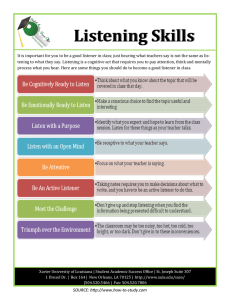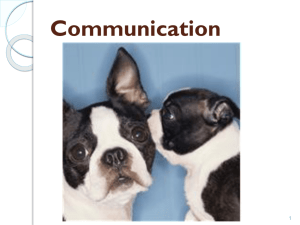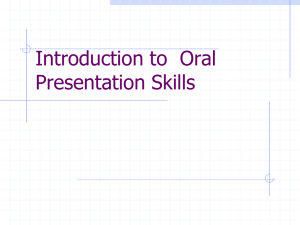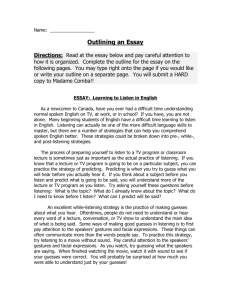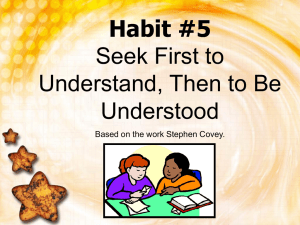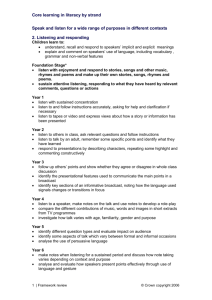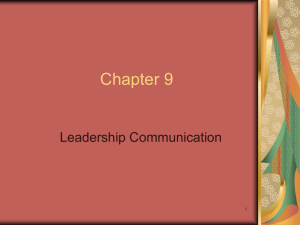Lesson Observation: Speaking & Listening Skills Checklist
advertisement
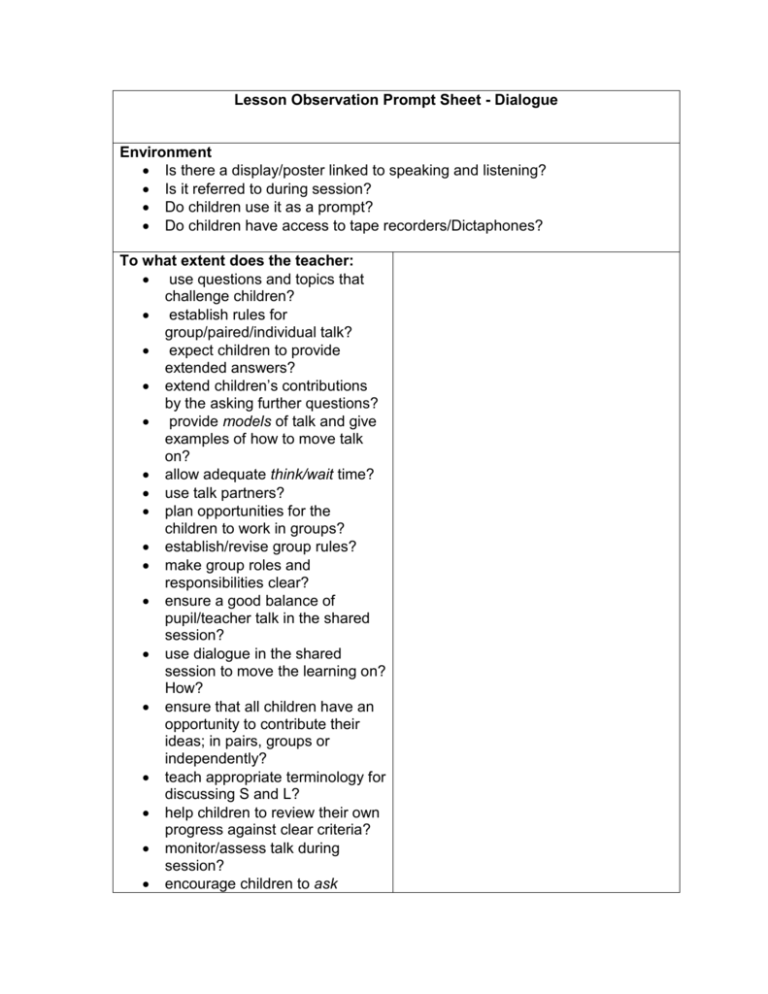
Lesson Observation Prompt Sheet - Dialogue Environment Is there a display/poster linked to speaking and listening? Is it referred to during session? Do children use it as a prompt? Do children have access to tape recorders/Dictaphones? To what extent does the teacher: use questions and topics that challenge children? establish rules for group/paired/individual talk? expect children to provide extended answers? extend children’s contributions by the asking further questions? provide models of talk and give examples of how to move talk on? allow adequate think/wait time? use talk partners? plan opportunities for the children to work in groups? establish/revise group rules? make group roles and responsibilities clear? ensure a good balance of pupil/teacher talk in the shared session? use dialogue in the shared session to move the learning on? How? ensure that all children have an opportunity to contribute their ideas; in pairs, groups or independently? teach appropriate terminology for discussing S and L? help children to review their own progress against clear criteria? monitor/assess talk during session? encourage children to ask questions? expect children to support each other with talk? To what extent do pupils: use talk to support their learning? How? value talk? know how to articulate what it means to be a good talker? Strengths Areas for Development Progression in Speaking and Listening Year Speaking Listening 1 and 2 Can he/she: Convey simple information showing awareness of what the listener needs to know? Use words to sequence and sustain talk? Speak clearly and audibly to a large group? Vary voice and intonation with purpose? Can he/she: Listen with sustained concentration to others in the class and to an adult speaker? Ask relevant questions, follow instructions and remember main points? Identify points of interest when listening to a story told or broadcast/ Listen attentively in discussion by following up points, agreeing or disagreeing with other speakers? Use background knowledge about speakers to focus their listening purposefully? Identify in broadcasts some of the presentational features used in shaping and organising meanings? 3 and 4 5 and 6 Take a long turn spontaneously? Give a clear account/explanation which is sustained and complete? Use presentation techniques such as visual aids, gestures? Use formal language appropriately? Organise and shape a talk, making connections between ideas and drawing on different points of view? Use standard English appropriately? Use persuasive techniques deliberately to influence the listener? Use spoken language imaginatively, engaging the attention and interest of the listener? Identify the importance of some key differences between formal and informal spoken language? Analyse and evaluate how effectively speakers use language to argue and persuade? Sustain listening to different sources, making their own notes@
